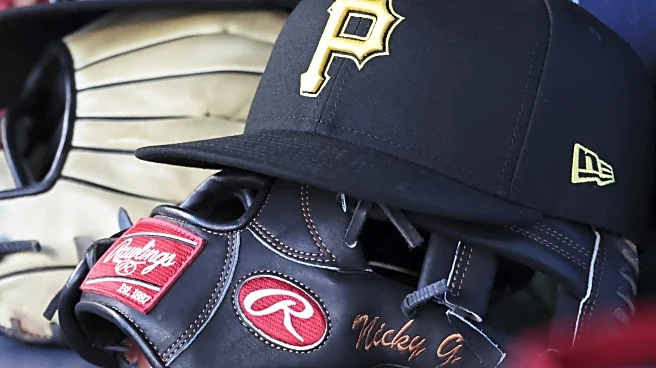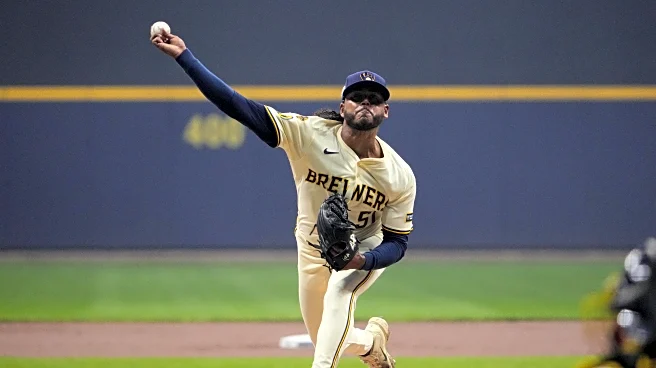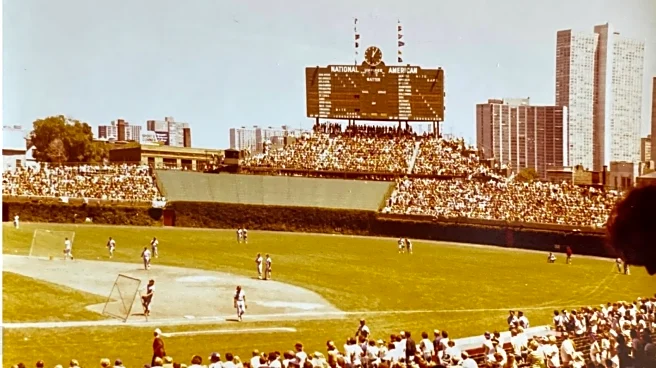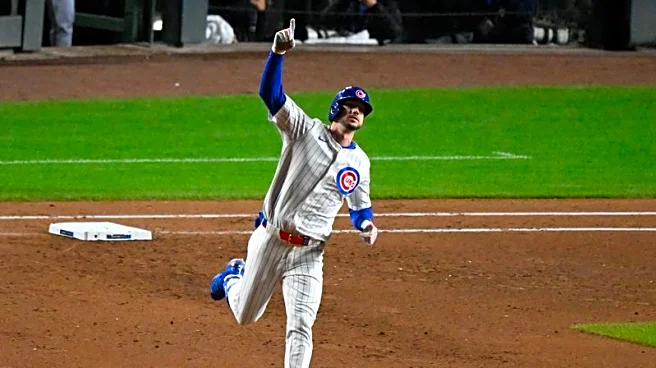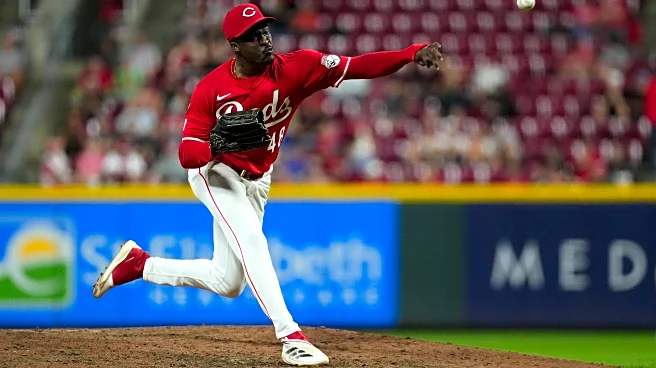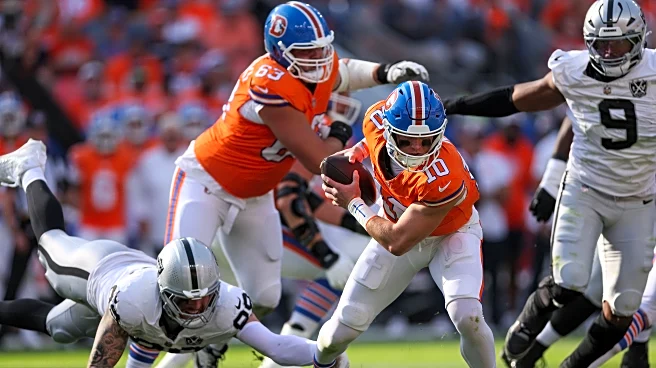Back in August, I did a quick look at the Cardinals minor league system here, done after the 2025 trade deadline. That article attempted to capture all the new players the Cardinals had just brought in via
trading and drafting and what impact they would have on prospect depth. It was a before-after comparison using a before-the-draft Fangraphs update and an MLB.com after-the-deadline update. At that time, I focused on the individual players acquired, more than the system as a whole. Based on what I was seeing, I surmised that the Cardinals had increased their system depth by a fair bit, primarily in the FV 40 and 40+ area. Now, Fangraphs has published a system-wide ranking across MLB shown here. As the title indicates, Fangraphs now ranks the Cardinals’ system #1 in all of baseball, using player valuations as the metric.
Looking through the recent FG system rankings, I find some interesting nuggets. Last year at this time, Fangraphs ranked the Cardinals’ system as #21 in all of baseball. From 21 to 1 is quite the leap. How did they achieve this leap? Some observations…
The Cardinals went from 41 to 49 ranked players
NOTE: Since the Fangraphs system update was published, FG has added a 50th prospect to the Cardinals list. I think it was Ethan Young, a 35+ pitcher. So, now they have 50, but this article is based on the 49 included in the system rankings.
Looking at “The Board” on Fangraphs, having fifteen new players really helps. Who are these new entrants onto the prospect list?
- Six of those came with the 2025 deadline trades of Helsley, Maton and Matz. These six are: Ellisalt, Dohm, Baez, Jordan, Molina, Hales.
- It looks like six 2025 draftees made the list. Doyle, Mitchell, Crossland, Gurevitch, Flores, Franklin. FG really liked the Cardinals draft overall. They’ve since added Young.
- A handful of guys came off due to graduation to balance the scales.
The list has a few oddities, mostly related to lag time between performance and the rankings recognition of it. I expect that there are some guys who should vault onto the list if they sustain their performance next spring. Some are easy to spot …
- 2024 draft picks who were not ranked last year due to injury and have not shown up in the update (yet). Dutkanych and Findlay.
- Deniel Ortiz doesn’t appear anywhere. I suspect he has no prospect grade, being such an unknown, but I bet he gets one soon. And I’d bet it isn’t 35, either.
- There are some pitchers who actually avoided injury and took advantage of the opportunities other pitcher injuries provided. I bet these guys are without grades yet, as well: Michael Watson, Mason Burns.
- A few guys will fall out of the list with the next update – Koperniak and several others don’t seem long for this organization. On the surface, it appears more guys will add than will subtract. Which would be positive.
- I don’t understand Pete Hansen. FG has him #10 (FV 45 and low risk). MLB.com doesn’t seem to think he exists. Which is it?
- Injuries influence how this list looks. A very course check suggests this is true for all systems, not just this one. Injured guys like Roby and Robberse fell off a bit in their ranking, presumably due to those injuries. This effectively reduces the value of the system. But other guys rose as a result of the open spots that created. Probably specific to the Cardinals this year is the number of guys who fell due to injury, who may come back and then end up off this list entirely because they may end up on the MLB roster once they’ve established health (Roby, Hjerpe, Robberse, Hence). In the end, I see it as positive that they lost several top-end individual talents due to injury, but the overall system still looks stronger.
How does this list affect overall system rankings?
A comment about FG … they don’t necessarily have a hard and fast Top-30 or Top-25. To rank a system, they give scouting grades to each player (not an ordinal rank) and bucket them by their scouting grade. Then they monetize each grade and then sum the dollar value of each graded player. For example, the Cardinals have 16 players graded at 35+ FV. Each 35+ prospect is worth (on average) $500k of FV. So, they have $8m in 35+ players. Do that for every player with every scouting grade > 35 and you come up with a net dollar value for the system. Some of the breakdown I see is:
- The Cardinals’ system value is now $283m. Tops in baseball. For comparison, last year, the top was Tampa at $271m. Last year, the Cardinals system value was $140m.
- The Cardinals achieve the $283m value with a comparatively low number of prospects. The Rays got to $270m last year with 70 (!) ranked prospects, whereas the Cardinals exceeded that with but 49 ranked prospects. I read that to say they have less quantity than Tampa had, but perhaps greater quality among the ranked prospects.
- The count of 49 ranked prospects is 10th in MLB (Baltimore leads with 70).
- Last year’s count of 32 ranked prospects ranked 26th in MLB. If the Cardinals had 49 ranked prospects last year, they would have ranked 4th (not 10th, like this year). This tells me that across all of baseball, there are more prospects rated 35 or higher in 2025 than 2024. So this phenomenon affects more than the Cardinals system. Grade inflation, perhaps? I find this interesting, because anecdotally, prospect writers tend to consider this a down year in the minors. Perhaps a lagging effect of fast promotions of all the 55 and over players?
What do we see at the top end?
- At the end of the 2025 season, there are only 6 prospects in all MLB rated above 55 FV. Last year there were but 7 of these guys. Can’t miss. None of them Cardinals, in either year.
- This year, the Cardinals went from 0 to 2 players rated 55 FV. These two players alone added $80m in value to the Cardinal system ranking. Who? Wetherholt and Doyle (they had Wetherholt at 50 last year and are more bullish on him now).
- There are only 16 prospects across MiLB at 55 FV. The Cardinals have 2 of them. No one has more, and many have less.
- Put another way, across MiLB there are 22 top prospects rated 55 or greater FV, or slightly less than 1 per team average. The Cardinals have 2 of them.
- The Cardinals also advanced from 4 players 45+ or 50 FV last year to 7 this year. Again, some growth in the quality end of the rankings. It’s a deeper system, but also one with some top-end quality.
Other observations
- The Cardinals tendency appears to be more strength on the pitching side, both quantity and quality, with 29 of the 49 ranked prospects being pitchers. Toward the higher end of the FV grades, the Cardinals tend to rank in the upper echelon as compared to other systems. They are ranked top-5 in 55 FV, 50 FV and 45 FV pitchers. The actual quantities here are quite low, which gives rise to great volatility. One or two pitcher injuries or flame outs can drop a team from top-10 to bottom-10.
- The Cardinals did advance from 1 batter that was 50 FV or greater last year to 4 of these this year, so while the total hitting prospect count is unimpressive, there is some quality there. Who? Taken from their Top-100 list, I see Bernal, Rodriguez and Crooks at FV 50 plus the aforementioned Wetherholt (FV 55 now). They appear unconvinced on Baez (Joshua). Ortiz is not yet graded, as far as I can tell. I guess that is what happens with 16th round draft picks.
- System depth is important. 40, 45, 45+ guys break out from time to time (ex. Brendan Donovan), and if you have enough of them, the odds swing in your favor. The Cardinals have mined this fertile ground for years. This year, their depth here appears improved.
- The Cardinal have 42 of these “under 50” FV prospects. Historical averages suggest that there is one or two notable players lurking in that group. A Donovan or a Nootbaar. I did a review of the prospects who enjoyed the best 2025 MiLB seasons a few weeks back here. Of the 15 really nice seasons selected for highlight (think of them as breakouts), fully twelve of these players fall in this below 50 FV group. For one or two (or more?) of these 12 guys, this past season could represent the threshold where a true prospect emerged from the turtle shell of prospect development. Who? Levenson? Honeyman? Davis? Watson? Burns? Henderson? Mautz? Hansen? Time will tell.
- Top-end quality is important, too. In this case, I can’t say the Cardinals are oozing top-end quality, but what I really like is that of the 7 Cardinal prospects rated 50 FV or higher, 5 or 6 of them are outfielders or pitchers, which is where the Cardinals major league roster needs the greatest infusion of talent. I guess alignment is important, too. For a few years, the Cardinal system was only producing talent on the infield, where they didn’t really have a shortage. It looks like the worm might be turning here.
How the NL Central looks
As I evaluate the Cardinals, I like to more closely compare them to the local competition within their division. Quickly, here is what I see:
- Pittsburgh and Milwaukee are just behind the Cardinals in valuation (2nd and 4th, respectively) and in prospect count, so one could say while the Cardinal results are nice, they don’t really offer a competitive advantage. More like, they’ve finally caught back up where they were behind.
- Cincinnati and Chicago finish in the lower half of valuations (17th and 23rd, respectively). Things look less promising in these quarters in the longer-term view. Pittsburgh’s system is a bit top heavy (2 players 60 FV or better – can’t miss). This valuation will look a lot different if they do miss on just one of those guys. Their system looks pretty good if they can hit on 100% of their top guys. It’s hard to be perfect, though.
A more general view of how teams compare is shown below. Upper right is good, lower left is bad. Generally, I’d view bottom-right as a top-heavy system, upper-left as a bottom-heavy system, lower-left as lightweight and upper-right as being in the Goldilocks zone – just right.

Summary
One of the things I like about FGs valuation approach is that it tends to mute the effect of some of the bias’ other system rankings have. For example, when MLB.com rates system, them putting Rodriguez into the Top-100 will significantly increase their assessment of the Cardinal system and likewise decrease their assessment of some other system that lost the Top-100 slot Rodriguez took. That is enough to move the Cardinal system up two slots alone, although the emergence of Rodriguez as one player really doesn’t say all that much about how deep a system is. In those rating systems, one player has an outsized impact.
In the FG approach, they work smooth out and hide the effects of the one player, especially the unicorns. The valuation approach ends up being more like this…
- The Cardinals have 5 players 50 FV or better (50 FV or better is what I think of as the first pool – quality). Doesn’t really matter who, but the valuation basically says they are likely to hit on 2 or 3 of these 5 guys and achieve notable results (with a high value ~$200m).
- Likewise, the 42 prospects under 50 FV (what I think of as the second pool – quantity) carry a value of about $80m, and the valuation basically of these prospect grades says that they are likely to hit on 1 or 2 of these guys to go on to notable results to achieve this value.
They really aren’t predicting which individual players will make it like other systems do, and then ranking the systems based on their individual rankings as much as they are valuing the pool itself. I like that approach. This avoids the wild variances that come with ordinal ranking guys that are indiscernibly different. A 50 FV rated #9 sways the ranking way more than some other teams’ 50 FV guy rated #25. This way, if they are too gaga over Rodriguez and he flops, the valuation ranking isn’t undermined. The Cardinals can still (and likely will) hit on 2-3 guys from each pool and the overall ranking is supportable, even if picking the exact player and trying to rank them is … inexact science and a tad volatile.
Things appear to be looking up in the Cardinal MiLB system. For those who wish, you can cheer the early returns of the new leadership regime. For those with a different view, you can recognize and appreciate that some of the seeds for this improvement were sown by the prior leadership team. Everyone wins.
Some upcoming things to watch for in this arena:
- FG has Hjerpe at 45. With a low-risk, I translate that to high floor, low ceiling. He missed pretty much all of 204 with TJ and the Cardinals have a 40-man decision to make on him. If they view him as a 45+ or a 50, it’s probably an easy reach to put him on the 40-man. If they view him more as a 40, they might try to sneak him through but save the roster spot. Hard to say. When Nov. 18 comes, we will know more about their internal assessment of him.
- Really, any of the prospects who are now eligible for the Rule V draft fall under this same umbrella. Mautz, Bernal, Hansen, Rincon, etc. Their decisions will tell us more about their internal assessments.



